
by Barb Kurkas Lee | Aug 17, 2018 | All Articles, Guest Contributors, The Core Archetypes |
Riding on the bus made me very anxious. Would it stop right in front of my home, or would it miss my stop and ride on? I wasn’t sure the bus driver even knew where to stop. After all, I was afraid to walk too far next to the big road that ran by my house. Being six years old and finishing a day in first grade was enough excitement for me. I can still vividly remember the one time the bus driver forgot my stop – it caused me to feel vulnerable. How many memories in our minds have caused us to feel anxious or vulnerable? These natural human feelings can often pile up on us. Whether the emotions are conscious, or unconscious is not the question here. Emotional pain, real or perceived, can affect all of us at some point in our lives.
“The primary objective of the victim archetype is to develop self-esteem and personal power.”
-Caroline Myss, Sacred Contracts, Awakening Your Divine Potential
One of the patterns in our humanness can be how emotional pain sometimes feels like a jail. We may have lost a bit of hope and purpose when dealing with daily life. We may have learned to suppress our fears, angers and yes, even rages. Our culture does not allow us to “lose it” very often. Keeping it together all the time can seem like a victimizer lives in our heads. The light side of the victim archetype pattern in us can work with that bully in our heads. We can choose to nurture our victimized selves with essential oils. The pain that comes from our overachieving society can be one of the biggest victimizers. So how do we cope? How can we choose something immediate and healthy to soothe our souls? We can connect with nature. Using a simple oil blend in an inhaler, cotton hankie, Kleenex or diffuser can help our conscious and unconscious minds relax and calm down not only to cope, but to add a bit of hope. Up to 50% of the inhaled essential oils enters our blood stream and has a very quick effect, lasting up to two hours.


Neroli Flower
Some helpful essential oils to use when shadow victim thoughts enter our minds and cause emotional pain include the following: Ylang Ylang Cananga odorata, Sandalwood Santalum album for a sense of grounding, Neroli Citrus aurantium or Lavender Lavendula angustifolia for centering, and Petitgrain Citrus aurantium amara or Roman Chamomile Anthemis nobilis for an experience of release. Mixing just three of these oils can give a soothing connection to the spirit. Essential oils work on a conscious and unconscious level. So, we keep in mind the intention of ending the pattern of emotional pain which victimizes ourselves as we use our oil blends to remember who we are, feel a bit better about ourselves, and breath easier.
As always, if you need further and deeper help with emotional pain, please seek professional help by seeing your health care provider, qualified counselor, pastor, or spiritual director.
“Neroli oil may be considered for any deep emotional pain that robs us of hope and joy.”
-Gabriel Mojay, Aromatherapy for the Healing Spirit.

by Julienne Givot | Oct 18, 2017 | Podcast Interviews, Podcasts |
This episode features a high voltage conversation with Julienne and Melissa Cynova, owner of Little Fox Tarot. Melissa has been slinging tarot cards and teaching classes since 1989. Her first book, Kitchen Table Tarot was released this year, and her next book is underway. We are giving away 2 copies of Kitchen Table Tarot! The next Patron to sign up at a $2 a month or higher level will get a copy of the book! More info an to sign up visit Tiny.cc/tarot Or find our entry posts on Facebook, Twitter or Instagram .
The conversation ranges from tarot in current events, pop culture and let me tell you we filled the swear jar in this episode. If you are sensitive to expletives this might not be the episode for you.
More about Melissa: She lives in St. Louis with her outstanding kids, her sweet husband, Joe, two cats, two dogs, and a tortoise named Phil. When she’s not slinging cards, she’s enjoying her tribe and probably watching a superhero movie while reading a book. She is on Twitter, Facebook, and Instagram. Go ahead and schedule a reading – she already knows you want one. LittleFoxTarot.com
Topics include:
The Moon
Trump
Politics
The Fool
Hero’s journey
The Outsider
The World
The Heirophant
The Tower
6 of swords
Miss Cleo

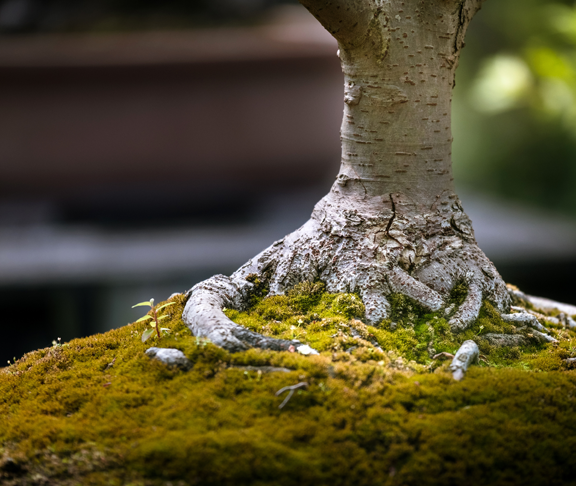
by Julienne Givot | Sep 19, 2017 | Podcast Interviews, Podcasts |
Julienne talks with Weston, creator of Root Lock Tarot and Root Lock Radio Podcast – a course on Tarot. They discuss the most difficult suit in the Tarot – the Swords. But it’s not all tough stuff, they geek out on Game of Thrones which is SO the suit of swords. Topics range from pop culture to politics in this lively discussion of the symbols in the sword cards. Weston has also generously offered to give away a 30 minute reading with him. Check out our Facebook, Twitter and Instagram from September 21st – October 15th, 2017 to find our entry posts. (If you are a Patron you are automatically entered into every giveaway!)
Help keep the Archetypal Tarot Podcast alive by becoming a Patron! Just visit Tiny.cc.tarot to find out about all the nifty rewards for joining our Patron team.
Download this episode (right click and save)
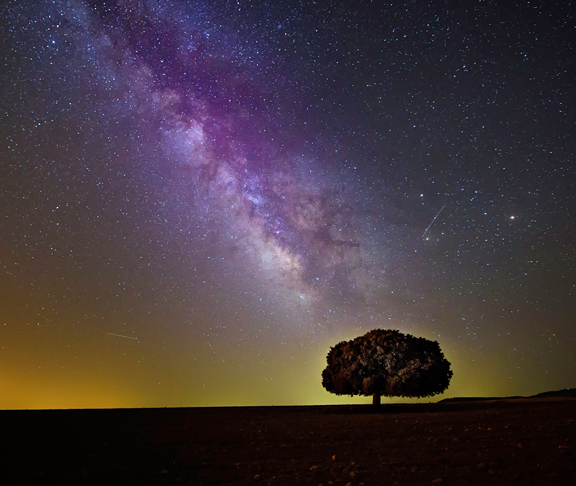
by Julienne Givot | Aug 3, 2017 | Faves, In search of wisdom blog, Podcast Interviews, Podcasts |
This episode features T!M Freke is a pioneering philosopher & bestselling author of 35 books. In Tim’s latest book ‘Soul Story’ he offers a revolutionary approach to awakening for the 21st century and a visionary new understanding of the nature of reality.
Tim and Julienne discuss the ideas in Soul Story, evolution from the Fool to the World and how the Tarot works – like really HOW TAROT WORKS. More info on Tim on his website TimFreke.com
Enter to win an ebook copy of Tim’s book Soul Story on Facebook, Instagram or Twitter @TarotPodcast Find entry posts and submit by August 18, 2017.
Sign up to be a part of the Archetypal Tarot Patron Team! tiny.cc/tarot


by Julienne Givot | Jul 17, 2017 | Faves, Podcasts, Pop Culture Archetypes |
Cyndera and Julienne bring their provocative archetypal and tarotic insights into the new film Wonder Woman. The archetypes in The Priestess, The Sun and the Chariot are at play in the film. They also discuss how listeners can become a part of the Archetypal Tarot team by signing up to be a patron of the show. https://patron.podbean.com/atpodcast
Treatise on Wonder Woman by Cyndera Quakenbush
In an attempt to add a poster of Wonder Woman to my office, a new colleague of mine expressed her reservation to the addition of this image to the office environment, which, to her credit, did contain a speech bubble from Wonder Woman’s mouth saying “No Time for Naughty.”
She articulated: “I feel it’s important to celebrate real women, brave and courageous historical leaders who had an actual impact on the world.”
I felt as though wounded, as if a spear had gone straight through my heart, as if she was saying I
wasn’t real. Why on earth did I feel this way? Wonder Woman is not, in fact, flesh and blood, and I am certainly myself not Wonder Woman.
The poster did indeed stick out like a sore thumb on the wall, she did not match the drab green walls, the muted tones of the overhead file bins. Would my own personality clash as brilliantly as this to the work culture? Wonder Woman seemed protected in her plastic cover, the natural light causing her to emit an armor of reflected light. I was speechless, tears came to my eyes, I left early from my first official day, along with the poster.
Today, in Wonder Woman’s defense, these words have come me:
You speak of the courage of suffragettes, the immensity of emotion portrayed in Frida Kahlo’s artwork, but who would these women be without the forces that came alive within them. We speak of these forces in abstracted terms all the time – they are real and present even after each historical woman exhales her last breath – Courage, Leadership, Imagination, Vision. Fictional figures such as Wonder Woman, illustrate and actually embody these forces for us.
The gift of Fiction, the gift of art, that percolates through our culture in various guises – depicts for us these forces we hope to ourselves enact. We can celebrate the lives of historical women AND embrace the inspiration of of the figures of fiction – who try on possibilities, dreams and visions that our not-so-humble humanity has not yet dared.
Scientists look to science fiction for ideas of invention and innovation. Teachers and psychologists look to literature for an understanding of human behavior. Mathematicians have found formulas from their dreams (another source some may call “not real”)
“The Gods have not died, they have just gone underground.”
The forces within us are Real – Love, Hate, Courage, Passion, Intelligence. Allow us to celebrate and be educated by history and Imagination alike, for one teaches of the past the other of the future.
Since her creation, Wonder Woman has been resurrected many times, always reflecting the struggles of the age. Her tiara and dark tendrils rise again, along with a voice that is once again trying to be heard.
What do you believe in? What do you wish to stand for?
Do you act from Love or do you simply hide and take cover from fear?
Wonder Woman’s name is Diana Prince – Diana connects her to the name of the Roman Goddess of the Moon. Like the light of the Moon, her power is a reflected one and thus reminds us of REFLECTION – the power to look within yourself to see your own shadows and your own light. Prince – though she is a woman she also embodies the sacred masculine. She is in touch with her noble male capacities (the animus in psychology). And thus Diana Prince, Wonder Woman, is a marriage of opposites, the holding of a tension between differences, and thus a medicine for our deeply divided times.
Red, White and Blue are the colors of Wonder Woman’s classic costume. In one comic, she is actually dressed from a tattered American flag. Since WWII Wonder Woman has stood for what is noble about the United States, a symbol of liberty, justice and truth. She rises in the face of what is most ugly about our country, which has always been equipped with the teeth of greed, bigotry, narcissism and blindness.
Wonder Woman rises with only the weapons of truth, and her own strength to remind us of the hope we must not lose hold of. Hold tight to the Lassos of Truth! Feel the bondage of those bracelets encircling your wrists, reminding all deeds done by these hands to be for the liberation of self and others.
Feel the tiara, placed upon the crown of the head, framing the third eye of Insight, Intuition and crystallized concentration. Most of all, feel your heart, beating with life, beating with love for life bursting in each moment with your passion…
Sign up to be a part of the Archetypal Tarot Patron Team! tiny.cc/tarot

by Julienne Givot | May 24, 2016 | All Articles, Featured Articles, Guest Contributors, In search of wisdom blog, Pop Culture Archetypes |
I’m happy to announce that a new audio lecture is available from my friend, mentor and fellow Archetypal Counselor, Jim Curtan. This set of recordings from his workshop for the Minnesota Jung Association last fall is an examination of American Mythology and Archetype. If you are interested in some of the foundational aspects of the United States of America this audio lecture is for you.
Purchase and download the course for $15
Archetypal America by Jim Curtan
An examination of American Mythology & Archetype
A live lecture recording from the Minnesota Jung Association workshop held in October 2015.
3.75 hours
The main American theme, I think, is freedom. It’s about individual freedom in opposition to or in tension with collective freedom.”
– Ken Burns, documentary film maker, “The Civil War”
 Throughout American history the archetypes which populate our myths and legends and capture our imagination are the Rebel, the Revolutionary, the Liberator, the Scout, the Pioneer, the Cowboy, the Explorer, even the Outlaw: all of them perpetually moving forward in pursuit of their idea of freedom, both on behalf of the common good and at the expense of it. While many of these archetypes appear from the very beginnings of our history, the conflict between the various notions of freedom—personal and collective—solidified in the American psyche in the years leading up to and following the Civil War. They continue to impact us and our ideas of ourselves to this day.
Throughout American history the archetypes which populate our myths and legends and capture our imagination are the Rebel, the Revolutionary, the Liberator, the Scout, the Pioneer, the Cowboy, the Explorer, even the Outlaw: all of them perpetually moving forward in pursuit of their idea of freedom, both on behalf of the common good and at the expense of it. While many of these archetypes appear from the very beginnings of our history, the conflict between the various notions of freedom—personal and collective—solidified in the American psyche in the years leading up to and following the Civil War. They continue to impact us and our ideas of ourselves to this day.
The course lectures introduce these archetypes, light and shadow, and the distinctions between each of them.
This course references the 1939 film Stagecoach directed by John Ford and starring John Wayne. The workshop attendees watched the film along with Jim’s commentary but due to copyright restrictions the film portion of the class are not available to the public.
Purchase and download the course for $15

by Julienne Givot | Dec 10, 2015 | Podcast Interviews, Podcasts |
Tell us what you thought of the show on Facebook or Twitter @TarotPodcast !
This month Julienne is in conversation with Archetypal Counselor, Spiritual Director and film buff, Jim Curtan. Jim and Julienne discuss some of their favorite topics – Archetypes and Movies. The focus on the Tower card in particular and the many aspects of change that it symbolizes. They discuss the good, the bad, the scary and as well as the grace that change can bring when we fully allow ourselves to grieve the loss of the past and dive into what the change brings us. They also discuss the Tower card in relationship to popular films such as The Hunger Games, Castaway, Inside Out and The Best Exotic Marigold Hotel.
Jim has just released a self-guided audio workshop called Embracing the Grace of Change using the film The Best Exotic Marigold Hotel as a contemplation on the choices and opportunities presented by the kinds of change that the Tower card can present.
As a gift to our listeners Jim is offering a 20% discount on this course and all others by using this link or entering the code podcast at check out.
More about Jim:
 Jim has combined his 20 years’ experience in the entertainment industry with more than a decade as a retreat leader and spiritual director to develop a unique and entertaining approach to using film as a gateway to rich spiritual experience.
Jim has combined his 20 years’ experience in the entertainment industry with more than a decade as a retreat leader and spiritual director to develop a unique and entertaining approach to using film as a gateway to rich spiritual experience.
He is a spiritual director, archetypal counselor and retreat leader. He has taught extensively with New York Times best-selling author Caroline Myss and has been a faculty member of the Caroline Myss Educational Institute (CMED) since its inception in 2003. He has also taught at the Omega Institute in Rhinebeck, New York, The London Centre for Spirituality, St. John’s Seminary, Stillpoint Center for Christian Spirituality and The Crossings in Austin, Texas among others.
His lectures and workshops have been well received throughout the United States, Canada, Great Britain, the Netherlands, France and Indonesia.
In his prior career as a talent manager, Jim advised such prominent actors as John Malkovich, John Travolta, Patrick Swayze, Geena Davis, Willem Dafoe, Andy Garcia and Melanie Griffith.
Since 2014 Jim has produced a series of self-guided workshops using films for archetypal and spiritual contemplation of situations that affect our daily lives. Each comes with an audio course commentary on the film and workbook available to download immediately from his online store. Courses include:
These and more audio courses are available to download from his website http://jimcurtan.com/audio-workshops/
Podcast listeners can save 20% off any purchase when they use the offer code: podcast
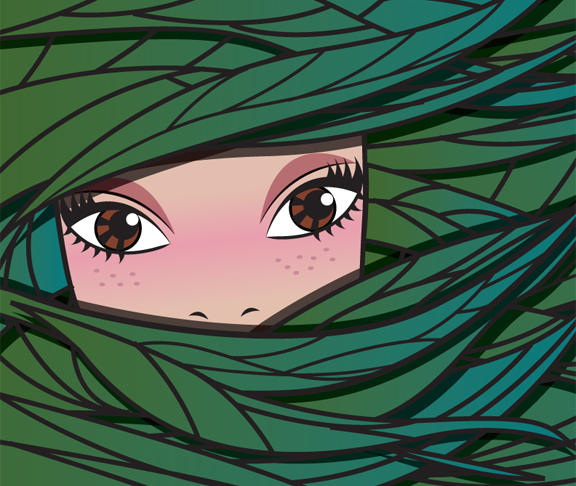
by Julienne Givot | Sep 11, 2015 | Faves, Podcasts |
Quickie Edition of the Archetypal Tarot Podcast! (Quickie Editions are 30 mins or less)
The Woo-Woo Episode – taking on Superstition
 Julienne and Cyndera are back to the closet (aka Archetypal Tarot’s secret headquarters) for an in-depth discussion on superstition and all-around “woo-woo,” which the urban dictionary defines as “unfounded or ludicrous beliefs.” After using these terms in a few podcasts, they received an email from a listener asking just why they are so down on anything ‘woo-woo’ or superstitious. Always happy to hear from listeners and taking this question to heart (and mind), J and C clarify what they mean by superstitious and philosophize on the subject of the tarot, astrology and other systems as both sacred and important learning tools for discernment.
Julienne and Cyndera are back to the closet (aka Archetypal Tarot’s secret headquarters) for an in-depth discussion on superstition and all-around “woo-woo,” which the urban dictionary defines as “unfounded or ludicrous beliefs.” After using these terms in a few podcasts, they received an email from a listener asking just why they are so down on anything ‘woo-woo’ or superstitious. Always happy to hear from listeners and taking this question to heart (and mind), J and C clarify what they mean by superstitious and philosophize on the subject of the tarot, astrology and other systems as both sacred and important learning tools for discernment.
The podcast incorporates feedback from Twitter followers, the esteemed “Uncle Carl” (Jung) and contemporary idea guy Seth Godin among others.
While studying astrology I have applied it to concrete cases many times. … The experiment is most suggestive to a versatile mind, unreliable in the hands of the unimaginative, and dangerous in the hands of a fool, as those intuitive methods always are. If intelligently used the experiment is useful in cases where it is a matter of an opaque structure. It often provides surprising insights. The most definite limit of the experiment is lack of intelligence and literal-mindedness of the observer. … Undoubtedly astrology today is flourishing as never before in the past, but it is still most unsatisfactorily explored despite very frequent use. It is an apt tool only when used intelligently. It is not at all foolproof and when used by a rationalistic and narrow mind it is a definite nuisance.
– Carl Gustav Jung: Letters, volume 2, 1951-1961, pages 463-464, letter to Robert L. Kroon, 15 November 1958


by Julienne Givot | Sep 2, 2015 | All Articles, In search of wisdom blog, Pop Culture Archetypes, Real Life Archetypes |
“Tell me, what is it that you plan to do with your
one wild and precious life?” – Mary Oliver
I am so very excited to present this new Archetypes & a Movie course to you!
 The third edition of Archetypes & a Movie examines what happens when our old story has reached the end of it’s shelf life and how we can embrace the grace that change brings us. Using the film The Best Exotic Marigold Hotel as contemplation on the choices and opportunities that lead us to an unexpected next chapter of our lives.
The third edition of Archetypes & a Movie examines what happens when our old story has reached the end of it’s shelf life and how we can embrace the grace that change brings us. Using the film The Best Exotic Marigold Hotel as contemplation on the choices and opportunities that lead us to an unexpected next chapter of our lives.
This self guided workshop is comprised of lecture and commentary on the film plus a full color illustrated workbook with supplementary information.
People of all ages can learn about moving from crisis to re-birth, discovering a secret chapter to our lives, aligning with grace through chaos, navigating the unexpected and finding beauty and love at any age.
Join spiritual director and archetypal counselor, Jim Curtan in a virtual adventure that will touch your heart & inspire you to claim the beauty of your one wild and precious life!
Listen to a conversation with Jim about working with change on a recent edition of the Archetypal Tarot Podcast.
As a gift to podcast listeners Jim is offering a 20% discount on this course and all others by using this link or entering the code podcast at check out.
Here is an excerpt from my essay included in the course ebook:
Change, Disappointment & Grace
Change: a : to make different in some particular : alter b : to make radically different : transform c : to give a different position, course, or direction to
Disappointment: something (or someone) that fails to meet expectations
Grace: unmerited Divine assistance given humans for their regeneration or sanctification
I saw The Best Exotic Marigold Hotel for the first time with my Mom and we both cried. They were those kind of tears that aren’t just happy or just sad – but the big, slow, salty tears that hold so much as they slide down your cheeks. I called Jim the next day and said “You have to teach this movie!”
Naturally, he was already ahead of me on that.
Why is change often so very difficult? We expect one future and change sweeps in and presents something else. It can feel like a theft of a life, leaving us vulnerable in a waiting room with disappointment as our only company. This film asks us to question our beliefs and entertain the idea that disappointment is a necessary companion inviting us to let go of our expectations and welcome in a new life.
Get this self guided audio course to use with the movie Best Exotic Marigold Hotel for 25% off.

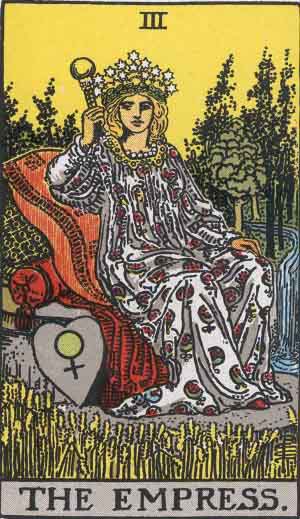
by Julienne Givot | May 10, 2015 | Podcasts |
Listen to the Podcast: The Archetype of the Empress: The Mother and Queen

Listen in on a conversation with
Tarot Dream Stone consultant Cyndera Quakenbush as we discuss the symbolic and real world qualities of these archetypal characters.
The Fourth edition of the Archetypal Tarot Podcast explores the meaning behind the Empress card of the Tarot as a stage of a journey where one is asked to create a protected, creative and nurturing space for their plans or project so it can grow before going on to the next stage of the journey. The Empress symbolizes the archetype of the Mother as well as the Queen. You’ll find out how these important patterns are to our growth and flourishing.
Archetypes referenced: Empress, Mother, Queen, Matriarch, Networker, Soccer Mom, Uber Mom and the Goddess Venus/Aphrodite
Film/Media Referenced: All About My Mother, Stepmom, Erin Brockovich, Serial Mom, Mommie Dearest, Elizabeth, Almost Famous
Like what you heard on the podcast? Share us on Facebook (handy button below) or give us a review on iTunes.

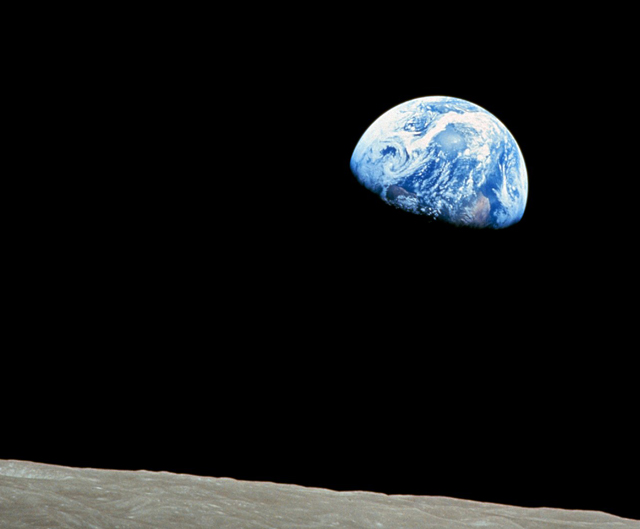
by Julienne Givot | Apr 4, 2015 | Podcast Interviews, Podcasts |
Follow us on Twitter! @TarotPodcast or on Facebook
Download this episode (right click and save)

Craig Chalquist – Depth Psychology Bad @ss!
In the continuance of the new Archetypal Tarot Podcast series, Julienne and Cyndera break the linear mold of the Tarot order and jump all the way to The World Card!
Our guest for this episode is Craig Chalquist PhD. Craig is the department chair of East-West Psychology at the California Institute of Integral Studies and adjunct faculty at Pacifica Graduate Institute, where he teaches ecopsychology.
Craig is an author and editor many books, including Terrapsychology: Reengaging the Soul of Place.
He is also a contributor to the Huffington Post, AlterNet, The Journal of Critical Psychology among many, many others. Craig is a Certified Master Gardener, teacher to many, passionate advocate of cultivating a sustainable relationship to the planet and all around bad ass of depth psychology.

Freud vs Jung! (with Cyndera egging them on)
Topics discussed / fun had:
- The momentous effect of “earthrise” the first photograph of the earth taken from space and how it forms a new mythology.
- Hobbits & Heroes (guess which we need more of these days?)
- How Craig started teaching the Hero’s Journey and why he seldom does anymore.
- The Avengers
- Alchemy & Gnostiscism & the Silver Tradition (hint: it’s not all about the dudes…)
- Carl Jung and the red book
- The Pandora’s box opened by the Nuclear age
- The role of fantasy as impetus for change (in fact the driving force of necessary change).
- Using mythology to shift consciousness
Download this episode (right click and save)
Podcast listeners might be interested in Craig’s online Certificate of Applied Mythology course. We highly recommend it!


by Julienne Givot | Nov 8, 2014 | Podcast Interviews, Podcasts |

Stephanie Meghan of Soulshine Tarot
How can you use the archetypal images of the Tarot to release limiting beliefs? In this special edition of the Archetypal Tarot Podcast, Cyndera has a conversation with Stephanie Megan of Soulshine Tarot about just that.
Stephanie Meghan a Tarot Archetypal Hypnotherapist and owner of Soulshine Tarot an online personal development practice that uses the archetypal images of the Tarot. Meghan is an ivy-league trained scientist who takes a no-nonsense approach to reading Tarot and helping her clients release limiting beliefs.
Stephanie offers customized sessions with guided meditations mixed with a gentle hypnosis. Meditation is an immensely powerful and beneficial tool that can enhance your well-being and can allow you to remove limiting beliefs that cloud your path to happiness.
Soulshine Tarot Website
Connect with Stephanie on Facebook
Want to email us about the Archetypal Tarot Podcast? We’d love that! ATPodcast@archetypist.com
Listen to the episode below or subscribe on iTunes

by Julienne Givot | May 19, 2014 | All Articles, Featured Articles, In search of wisdom blog |

image ©Carol VanHook
I’ve been contemplating the fact that we are now almost half way through 2014. How did that happen and where did the last 5 months go? More importantly, what season is it? I mean this metaphorically. It’s almost Summer here in my part of the western United States – but what season is it for me, in my life and business? What needs further tending and what is ready for harvest? So when I read the following from Poet and Author David Whtye’s recent article entitled 10 Questions that Have No Right To Go Away it was thought provoking for me on many levels – at least 10 of them. Below is from Whyte’s list (it’s number 3):
Am I harvesting from this year’s season of life? “Youth is wasted on the young” is the old saying. But it might also be said that midlife is wasted on those in their 50s and eldership is very often wasted on the old.
Most people, I believe, are living four or five years behind the curve of their own transformation. I see it all the time, in my own life and others. The temptation is to stay in a place where we were previously comfortable, making it difficult to move to the frontier that we’re actually on now.
People usually only come to this frontier when they have had a terrible loss in their life or they’ve been fired or some other trauma breaks open their story. Then they can’t tell that story any more. But having spent so much time away from what is real, they hit present reality with such impact that they break apart on contact with the true circumstance. So the trick is to catch up with the conversation and stay with it —where am I now?—and not let ourselves become abstracted from what is actually occurring around us.
If you were a farmer, and you tried to harvest what belonged to the previous season, you’d exhaust yourself trying to bring it in when it’s no longer there. Or attempting to gather fruit too early, too hard or too late and too ripe. A person must understand the conversation happening around them as early in the process as possible and then stay with it until it bears fruit.
If we have a tendency to be operating well behind the curve of our own growth, then how do we go about finding out just what season we are in and not have to wait for a major life issue to do it for us? Undoubtedly we will benefit from having this knowledge so we can harvest what’s ready, re-plant or just let a field lie fallow for a while. In true poetic fashion Whyte doesn’t give us the bullet list of ways to suss this out.
Our first tendency might be to look to the paradigms of where we ‘should’ be in our lives based on age, culture, gender etc., but those no longer really hold true across the board. Rapid fire communications and access to vast amounts of information online has created a cultural diversity not bound by any single society. We are freer now to do our own thing outside of social convention because they’ve been diffused and scattered. You can be 60 and going back to school, 40 unmarried and thrilled about it, 22 and starting your own multi-billion dollar business. So without referencing a cultural norm (which frankly, I think is a great relief) how does one go about assessing their own season? Whyte points to listening for the core conversation of your life. This conversation holds the elements of the season.

©H.Koppedelany
I had to give this a try for myself. Archetypes are obviously a core part of what I do, so why not let them do some of the heavy lifting on this job?
When you run your own business you are often many people at once, Administrator, CFO, Boss and Worker Bee. I experimented with letting my archetypal office staff give their answers to the question of season. I conducted a faux interview with each voice and asked them about their accomplishments and experience of 2014 so far. I asked what needed further tending, harvesting or just simply some rest. What I came up with was fascinating and useful.
I also found it helpful to pay close attention to the conversations that were going on in my life with myself and others. I looked at what archetypes were driving the conversations and responding. A week or so in, I realized that the core conversations were pretty clear and some surprising answers to the seasonal question came up.
If you are game to give it a try, here is a simple exercise to help you work out your own seasonality. I bet you’ll be surprised by what you come up with and in turn, gain a clearer understanding of your next steps.
Discovering Your True Season
Every day for a week, before you go to bed, jot down a list of the following. No need to write the entire conversation – just the key points like a newspaper headline. Don’t read the list from the day before.
- 5 situations I worried about today.
- 5 conversations I had with myself today.
- 5 conversations I had with others today. This could be anything, a chat with an office mate, partner, the lady in the check out line.
- 5 things I was excited about today. If you don’t have 5, write down what you wanted to be excited about instead.
- Things I was asked to do today. This could be what you were literally asked to do or something you felt called to do like smile at a stranger, or buy a co-worker a coffee, ignore a phone call.
On the 8th day (maybe a Sunday over coffee and when you have time to relax) take out your notes. Rip out the pages and set them on the table side by side. Read them in order, mix them up and glance over them again. Too many wildly different conversations? Maybe it’s mid-summer and some weeding needs to be done to make room for the truer harvest later on. What’s coming up with no fruit and needs some fertilizer or perhaps a winter’s rest? What has you really excited and needs some planting? Lots of requests for the same thing? Maybe it’s harvest time. Whatever comes up for you, the essential clues come in the form of the season that your ideas need right now, the next steps are naturally going to be clearer.
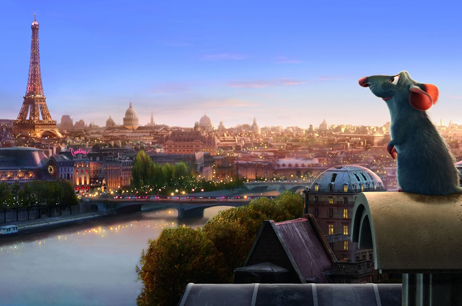
by Julienne Givot | Mar 22, 2014 | All Articles, Pop Culture Archetypes |
Movies are one of the best ways to see how archetypes shape our motivations, drive us forward or pull us back. We learn and experience so much when watching a film with the added bonus of being entertained. I had the privilege to learn about archetypes through film from Master Archetypal Teacher Jim Curtan during my archetypal certification training at CMED in Chicago. Each night Jim lead us on a guided tour of the archetypes and spiritual lessons in all sorts of films from Castaway & Erin Brockovich to The Wizard of Oz.
No other method has taught me more about the power of archetypes and the human spirit than watching a film with Jim. This is why I am completely jazzed to share Jim’s first self-guided audio workshop providing in-depth commentary on films so you can learn in the comfort of your own home.

Ratatouille: Fate, Destiny and the Hero’s Journey
The premiere workshop is an examination of the journey to becoming who we are destined to be through the 2007 animated feature film, Ratatouille. Remy’s journey from a rat subsisting on scraps to a grand celebrated Parisian chef is a powerful metaphor for our own desires to leave the known world for one that lies beyond and is envisioned only by our dreams.
You will learn about the choices that transform a fated life into a destined one. You will see how all of us can get trapped by the beliefs, customs and values of society and how our perception of necessity often steers us away from our dreams and into a life marked by confusion, depression and a sense that there is no meaning to life beyond the mundane world. Part of us knows we have a destiny, but to achieve it, we must learn to choose intuitive guidance over the ego’s fear of humiliation and failure. In other words, where most of us get stuck – egoic fear.
You will find excellent depictions of the archetypes of the Artist, Hero, Invisible Child, Rebel, Liberator, Orphan, Companion, Warrior, Miser, Authoritarian, Judge, Priest and many more.
This course allows you to watch the film and listen to Jim’s commentary on your iPod or other digital player, taking your time to watch and learn. You’ll also get a free companion workbook with all kinds of supplemental info on the archetypes in the film, hero’s journey and exercises to apply to your own journey.
It’s a fun way to learn about archetypes and I helped produce it, so I am doubly proud.
Save $5.00 on the purchase by using the offer code: podcast
Find out more: http://jimcurtan.com/audio-workshops/
Purchase now:
Ratatouille: Fate, Destiny & The Hero’s Journey Audio Workshop
The Way: A Journey of Healing & Self Acceptance
Julienne Givot is a certified archetypal consultant, writer and pursuer of truth and beauty.
More

by Julienne Givot | Jul 20, 2013 | Faves, Major Arcana Heros Journey, Podcasts |
What we call the beginning is often the end. And to make an end is to make a beginning. The end is where we start from. ~TS Eliot
Finally we reach the culmination of this heroic journey with card 21 –The World! In this last of the regularly scheduled podcast series, Julienne and Cyndera discuss beginnings, endings, rebirth, transformation and fulfillment.
After all these trials and tribulations of the hero’s journey, we now come to know true balance and connection to our destiny looking back across our past and forward into the future. We feel the benefit of the journey thus far and see that our evolution is not just for ourselves but for the good of others. From this stage onward, our sense of risk is different because we have a greater understanding of the richness of life and recognize both the strength and space to hold challenge and loss as well as joy in the days to come.
In Joesph Campbell’s classic definition of the Hero’s Journey, The World card represents the stage of Master of Two Worlds as well as the Freedom to Live.

The Rider-Waite version of The World
Symbols in the World Card:
- Ring of laurels tied with a lemniscate (infinity symbol) – The ring of laurels is also called temenos (Gk) a safe place, asylum, a temple, also reminiscent of the Yoni, laurels are also a symbol of victory.
- Infinity symbol seen also in: Magician, Strength (also in the 2 of coins/pentacles card)
- Androgynous figure / Dancer– leg crossed over just as in the Hanged Man card (it’s opposite on this Mobius strip) – a dance , balanced opposites, an act of creation – the Self in equilibrium, perfect union of masculine and feminine.
- Lion (Leo), Eagle (Scorpio), Bull (Taurus) and the Human (Aquarius) – 4 fixed signs of astrology – 4 elements (air, earth, water and fire). These 4 symbols also appear in the Wheel of Fortune card. these can also refer to a passage in the Bible’s book of revelation
- Suspended between heaven and earth – remember the Fool as she fell over the cliff, suspended for a moment not realizing what’s she’s gotten herself into? The symbolism of suspension this time is of balance and trust.
- 2 wands – balance – command of opposites (references to both The Magician and The Chariot). Wands are about doing – this is a sign of readiness.

Cundi Bodhisattva
The World as the Bodhisattva Card
Bodhi [enlightenment] and sattva [being]. From the Mahayana tradition of Buddhismm, the bodhisattva vow is the commitment to put others before oneself. It is a statement of willingness to give up one’s own well-being, even one’s own enlightenment, for the sake of others. Taking the bodhisattva vow implies that instead of holding our own individual territory and defending it, we become open to the world that we are living in and are willing to take on greater responsibility.
Film and Fiction References
Cloud Atlas, book (2004) and film (2012)
One of the main themes is of freedom and connection. Eventually leading to the realization that all is one. Redemption and evolution. Characters from each of the weave of stories in both the book and film have revelations of oneness:
Sonmi-451: “Our lives are not our own. From womb to tomb, we are bound to others. Past and present. And by each crime and every kindness, we birth our future.”
Robert Frobisher: “And all becomes clear. Wish I could make you see this brightness. Don’t worry, all is well. All is so perfectly, damnably well. I understand now, that boundaries between noise and sound are conventions. All boundaries are conventions, waiting to be transcended. One may transcend any convention, if only one can first conceive of doing so. Moments like this, I can feel your heart beating as clearly as I feel my own, and I know that separation is an illusion. My life extends far beyond the limitations of me.”
Adam Ewing: “What is an ocean but a multitude of drops?”
Issac Sachs: “These forces that often remake time and space, they can shape and alter who we imagine ourselves to be, begin long before we are born, and continue after we perish. Our lives and our choices, like quantum trajectories, are understood moment to moment, at each point of intersection, each encounter, suggest a new potential direction.”
Additional film references:
The Tree of Life (2011)
Frida (2002)
The Great and Powerful Oz (2013)
The Fountain (2006)
The Matrix (1999) – In the very last scene of The Matrix, Neo makes a phone call , saying: “When I used to look out at this world, all I could see was its edges, its boundaries, its rules and controls, its leaders and laws. But now, I see another world. A different world where all things are possible. […] I can’t tell you how to get there, but I know if you can free your mind, you’ll find the way.”
TS Eliot the Four Quartets

Popular associations with The World card:
- Fulfillment —– Accomplishment —– Success —– Integration
- Involvement —– Prospering —– Satisfaction —– Repleteness
- Contentment —– Good feelings —– Wholeness
“All shall be well, and all shall be well and all manner of thing shall be well.”
~Julienne of Norwich (14th century English mystic)
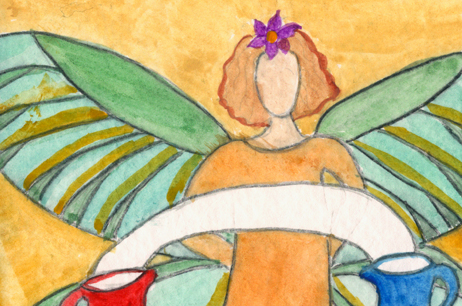
by Julienne Givot | Dec 17, 2012 | Major Arcana Heros Journey, Podcasts |
“What we strive for in perfection is not what turns us into the lit angel we desire.” ~David Whyte

Julienne’s rendition of the Temperance card
With a little rest after the Death card the Archetypal Tarot Podcast explores the beginning of the rebirth cycle with Temperance – the fourteenth card of the Major Arcana. Julienne Givot and Cyndera Quackenbush discuss the Angel archetype and the healing and recovery that can take place internally and even below conscious awareness. At the end of our second row, the Realm of Equilibrium, we have a resolution to the ongoing theme of opposites. Here, two elements are alchemized to create “the third thing” that mediates and transforms opposing realities. Listen to the podcast for more on this next step of the journey.
References
Cyndera mentions A Blue Fire by James Hillman specifically chapter 3.
Julienne mentions this related article: Original Fairy Godmother
“I am loath to close. We are not enemies, but friends. We must not be enemies. Though passion may have strained it must not break our bonds of affection. The mystic chords of memory, stretching from every battlefield and patriot grave to every living heart and hearthstone all over this broad land, will yet swell the chorus of the Union, when again touched, as surely they will be, by the better angels of our nature.”
~Abraham Lincoln’s first inaugural address
 Angel & Fairy Godmother/Godfather Archetypes in Films & Television:
Angel & Fairy Godmother/Godfather Archetypes in Films & Television:
-Angels In America – The Play / TV Mini Series (2003)
-Aunt March played by (Mary Wickes) in Little Women (1994)
-It’s A Wonderful Life – Film (1946)
-Danny Glover, Kevin Kline in Grand Canyon (1991)
-Rosalind Russell as Mame Dennis in Auntie Mame (1958)
-Audrey Tatou in Amelie (2001)
-Dustin Hoffmann in Mr. Magorium’s Wonder Emporium (2007)
-Robert DeNiro as Captain Shakespeare in Stardust (2007)
Shadow:
-Marlon Brando in The Godfather trilogy
-Glenn Close in Dangerous Liaisons (1988)
Television:
-Touched by an Angel
-What Not To Wear
Fairy Tales:
-Glinda in The Wonderful Wizard of Oz by L. Frank Baum
The Winter of Listening
By David Whyte
No one but me by the fire,
my hands burning
red in the palms while

Rider-Waite Temperance Card
the night wind carries
everything away outside.
All this petty worry
while the great cloak
of the sky grows dark
and intense
round every living thing.
What is precious
inside us does not
care to be known
by the mind
in ways that diminish
its presence.
What we strive for
in perfection
is not what turns us
into the lit angel
we desire,
what disturbs
and then nourishes
has everything
we need.
What we hate
in ourselves
is what we cannot know
in ourselves but
what is true to the pattern
does not need
to be explained.
Inside everyone
is a great shout of joy
waiting to be born.
Even with the summer
so far off
I feel it grown in me
now and ready
to arrive in the world.
All those years
listening to those
who had
nothing to say.
All those years
forgetting
how everything
has its own voice
to make
itself heard.
All those years
forgetting
how easily
you can belong
to everything
simply by listening.
And the slow
difficulty
of remembering
how everything
is born from
an opposite
and miraculous
otherness.
Silence and winter
has led me to that
otherness.
So let this winter
of listening
be enough
for the new life
I must call my own.
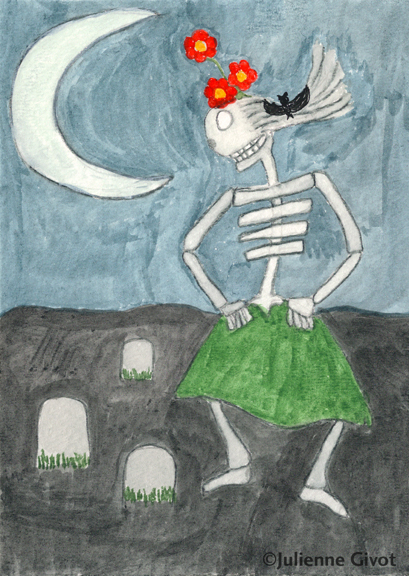
by Julienne Givot | Nov 18, 2012 | Major Arcana Heros Journey, Podcasts |
“We must let go of the life we have planned, so as to accept the one that is waiting for us.” ~Joseph Campbell
 Who knew that Death could be so funny? But here it is, card number 13 in the Major Arcana. Join Julienne and Cyndera as they look at the archetype of Death from a symbolic and psychological point of view with a dash of added humor. Learn why this inevitable stage for the Hero isn’t the end but an important element to the rest of the journey.
Who knew that Death could be so funny? But here it is, card number 13 in the Major Arcana. Join Julienne and Cyndera as they look at the archetype of Death from a symbolic and psychological point of view with a dash of added humor. Learn why this inevitable stage for the Hero isn’t the end but an important element to the rest of the journey.
The Death card liberates all that has reached its end, and cuts away stagnation so that life can continue. Beyond the literal interpretation of this card, there is a rich array of deaths that visit in our daily lives: the end of jobs, relationships and also the visitations of depressions and other forms of “falling apart.” What advantages are there to dismemberment and disintegration? How do Zombies and Batman play a role at exploring this the ultimate mystery of life – it’s end. Or is it the end? You’ll just have to get the podcast and find out.
PS: Listen to all the way to the end for a surprise (and possibly a laugh or two).
Resources Mentioned in the Podcast:
Key Words:
- Ending of a cycle – Loss – Conclusion – Sadness
- Transition into a new state – Psychological transformation
- Finishing up – Regeneration – Elimination of old patterns
- Being caught in the inescapable – Good-byes – Deep change
Film / TV References:
The Dark Knight Rises (2012
Sean of the Dead (2004)
Star Trek II: The Wrath of Khan (1982)
Bones (2005-present)
Dead Like Me (2003-2004)

Julienne’s rendition of Card 13: Death
“Yet through depression we enter depths and in depths find soul. Depression is essential to the tragic sense of life. It moistens the dry soul, and dries the wet. It brings refuge, limitation, focus, gravity, weight, and humble powerlessness. It reminds of death. The true revolution begins in the individual who can be true to his or her depression. Neither jerking oneself out of it, caught in cycles of hope and despair, nor suffering it through till it turns, not theologizing it – but discovering the consciousness and depths it wants. So begins the revolution in behalf of soul.”
~ from Re-Visioning Psychology by James Hillman
The Holy Longing
Tell a wise person, or else keep silent,
because the mass man will mock it right away.
I praise what is truly alive,
what longs to be burned to death.
In the calm water of the love-nights,
where you were begotten, where you have begotten,
a strange feeling comes over you,
when you see the silent candle burning.
Now you are no longer caught in the obsession with darkness,
and a desire for higher love-making sweeps you upward.
Distance does not make you falter.
Now, arriving in magic, flying,
and finally, insane for the light,
you are the butterfly and you are gone.
And so long as you haven’t experienced this: to die and so to grow,
you are only a troubled guest on the dark earth.
Goethe
(translated by Robert Bly)
Like what you heard on the podcast? Share us on Facebook (handy button below) or give us a review on iTunes.

by Andrew Morse | Nov 2, 2012 | All Articles, Archetypes and Dating, Guest Contributors, In search of wisdom blog |

photo ©Julienne Givot
Heartbreak is a term most often associated with the unfortunate end of a romantic relationship. It’s also a pervasive pattern that intersects every single human life everywhere. When we hear a friend say, “My heart is broken,” we can relate in an instant without their details. Heartbreak is an archetype that enters our lives on more than one occasion and under differing circumstances but it is not a pattern that organizes a life in the same way that, for example, the Mother does. We don’t meet someone think they were definitely born to for heartbreak. What drives the broken heart is the inability of our expectations to meet the demands of life.
A few years ago, I had my first great experience of heartbreak. The life I thought I would have and where I thought I would be by that time was unfounded and I admitted it. I couldn’t breathe as one image in sequence crashed into the next. I found it hard to stand. In the rubble of my fantasies I fell into despair.
We are forever building cities to our fantasies. We say to ourselves, “I’ll always be with this person,” “I’ll always work here,” “They’ll never die,” and so on. Then the day comes that person doesn’t love us anymore, or we get fired, or that someone dies. One illusion crumbles into another, falling against each other in a long, dusty sequence. Shocked, alternating in loss and denial, we begin a grieving process. We won’t see that the ruin that is our pain is also the opportunity. Whenever we begin something new we have to start with a clear surface to work.
I wandered through my life in the weeks that passed, through the same rooms and spaces I’d known but I wasn’t in them anymore. Whether I was angry at all the time wasted or in denial that the whole fantasy could be resurrected, I was in mourning for the life that had passed away. “Broken heart” became a mantra that I’d repeat to myself and then a visceral experience in my chest. When others saw that something was wrong and asked after it I couldn’t speak to what I was feeling. By myself, I’d weep a great deal. And then I began to ask, “What did break?” I knew I was alive so it could not be my literal heart. Something was broken but if not my heart, then a heart that was never real to begin with. And then there it was: A thrumming in my chest, a sensation that would become a guide back to the present. No longer was I drifting in the past and projecting towards a mythical future. Every motion a moment proceeding steady. With my attention there on my heart, I wasn’t dwelling on what was gone but I stayed here with was already still.
I call the heart that broke was my thimbled heart; cold, hollow, capable of measuring out loves only as much as what was put in, and hard enough to resist intrusion. It didn’t beat much. I had to lay down the remains of my expectations, and in so doing the thimble heart of who I thought I was in order to see what still stood undisturbed.

photo ©Julienne Givot
The magnitude of suffering that quantifies “heartbreak” constitutes a transformational journey, one of such weight and consequence that the issue(s) which began the process cannot be discarded as a measure of coming through the experience and being healed. In fact that would be irresponsible. We don’t leave these things behind, for living bodies carry the scars of the wounds that have been suffered. Only corpses never heal. And let me say that crying on occasion for the person we have been is not an indication that our wounds haven’t healed, but is a signal that our hearts are alive and engaged. If anything we gain the capacity to see the heartbreak in others and a greater compassion for the condition of loss and expectation that beats in all human beings. Born from the tears cried in the suffering of our undesired experiences, a greater heart moves unrelenting. Then it is that we break upon our hearts and breaking open, bear it blazing for all beings everywhere. When we sit with one who is breaking, maybe the best we can offer is a strong witness to the grief they are bearing and allow them their experience. Of all things the greatest helper is time. Perhaps when the broken heart calls once again to visit, we can remember and bring our attention back to what is left as a practical respite from our unbearable grief of letting go.
“Life will break you. Nobody can protect you from that, and living alone won’t either, for solitude will also break you with its yearning. You have to love. You have to feel. It is the reason you are here on earth. You are here to risk your heart. You are here to be swallowed up. And when it happens that you are broken, or betrayed, or left, or hurt, or death brushes near, let yourself sit by an apple tree and listen to the apples falling all around you in heaps, wasting their sweetness. Tell yourself that you tasted as many as you could.”
The Painted Drum by Louise Erdrich
Andrew lives in Portland. When he’s not concocting original condiments, knitting, and reading, he occasionally finds himself writing poetry and archetypal articles. You can email him directly: heartbreakthrough[at]gmail[dot]com Photo by Anatoly Petrenko
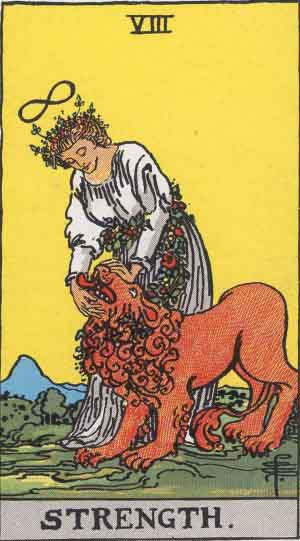
by Julienne Givot | Sep 18, 2012 | Major Arcana Heros Journey, Podcasts |
Listen Now! or Subscribe in iTunes

The Strength card as depicted in the Rider Waite deck
The Archetypal Podcast returns from its Summer Sabbatical with its Twelfth Edition starring the eleventh Tarot card, Strength. After a turn on the Wheel of Fortune our Hero/Fool is taken in a new direction and learns from the Lion and Maiden depicted in this card. Inner strength is called for with the knowledge that it’s made up of patience, self-control, and the awareness of one’s instincts and drives. Archetypal Consultant Julienne Givot gives us the breakdown of the empowered and disempowered archetype of the Damsel and reflections on Beauty and the Beast. Tarot Consultant Cyndera Quackenbush regales us with a retelling of an ancient Korean myth about a woman’s lesson in true courage. See below for a written version of the story.
Key Words:
- Fortitude – Lust – Courage – Patience
- Self-control – Being solid – Patience – Compassion
- Composure – Stability – Perseverance – Moderation
- Kindness – Gentleness – Slowness – Softness
- Serenity – Comprehension – Discipline – Inner strength
Film References:
La belle et la bête (Beauty and the Beast) by Jean Cocteau (1946)
Wizard of Oz (The Cowardly Lion and Dorothy) (1939)
Like what you heard on the podcast? Share us on Facebook (handy button below) or give us a review on iTunes.
The Tiger’s Whisker – A Korean Folktale
A young woman came one day to the house of a mountain hermit to seek his help. The hermit was a sage of great renown and a maker of charms and magic potions. When the young woman entered his house, the hermit said, without raising his eyes from the fireplace: “Why are you here?”
She said: “Oh, Famous Sage, I am in distress! My husband, who has just returned from fighting in the wars, hardly speaks to me and is as cold as ice. If he does speak it is with the most explosive fire in his voice! And he no longer enjoys the delicious food that he used savor at our supper table. I want a potion to give my husband so that he will be loving and gentle, as he used to be.””Ha, so simple is it? Can we cure a sick world with a potion?” the hermit said.”Master,” said the woman, if you do not help me, I am truly lost!”
Resigned at last, the hermit said, “Very well; I will help you to make a potion. But it requires an ingredient which I do not possess. The most essential ingredient is a the whisker of a living tiger.”
“The whisker of a living tiger!” She exclaimed. “How will I possibly get that?”
“If the potion is important enough, you will succeed,” the hermit said. He turned his head away, not wishing to talk anymore.
The young woman went home. She thought a great deal about how she would get the tiger’s whisker. Then one night she crept from her house with the most delicious morsels she had cooked especially for her task. She went to the place on the mountainside where the tiger was known to live. Standing far off from the tiger’s cave, she held out the food, calling the tiger to come and eat. The tiger did not come.
The next night She went again with some well-prepared food, this time a bit closer. Again she offered the food to the tiger. Every night she went to the mountain, each time a few steps nearer to the tiger’s cave and even though fear caused her knees to shake she took these footsteps forward.
Little did the young woman know, but the tiger was becoming accustomed to her presence and every night was also creeping closer in her direction. Eventually, one night, the two could see eachother in the moonlight just a stone’s throw apart. It happened again the next night and they were so close she could feel the warmth of the great feline’s breath. As the tiger knelt to eat the food she had given him, She reached out a hand very quickly and plucked a whisker from the Tiger’s face-
And the tiger
pretended
not to notice…
Clutching the whisker tightly in her hand, she backed away slowly, thanking the tiger softly and then went down the path, walking not running, towards the mountain hermit’s house.
“Oh, Famous One!” She cried, ” I have it! I have the tiger’s whisker! Now you can make me the potion you promised so that my husband will be loving and gentle again!”
The hermit took the whisker and examined it, his face alit by the flames of his firepit. Satisfied that it had really come from a tiger, he leaned forward and dropped it into the fire. It vanished immediately in the smoke.
“Oh sir!” the young woman called in anguish. “What have you done!” She proceeded to tell him the story of how patiently, over many weeks she had approached the tiger. “But you have thrown the whisker in the fire! It is all for nothing.”
“No, I do not think it is all for nothing,” explained the hermit. “Is any person more vicious than a tiger? The potion in which you sought was your own courage. You thought you did not have courage because you were afraid of a man. But true courage is being able to feel the fear and still take those steps forward. If you can win the confidence of such a wild creature, surely you can do the same with your husband?”
Hearing this, the young woman stood speechless for a moment. Then she went down the trail, walking but not running, towards home.
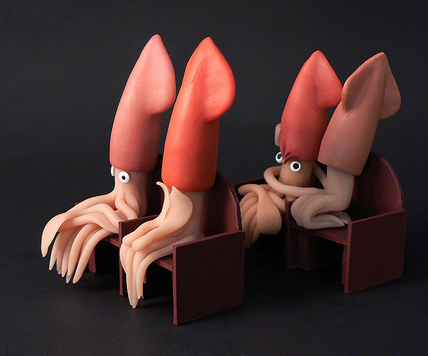
by Julienne Givot | Sep 10, 2012 | All Articles, Archetypes and Dating, The Core Archetypes |

©Justina Kochansky / Flickr
If dating seems like an ordeal, you are not alone. I’ve heard many versions of “I’m not dating because it sucks” from all sorts of people; gay, straight, men and women of all ages. I’ve expressed that sentiment myself more than a few times, but I also know that it doesn’t HAVE to be that way. Each of the archetypal guides in this series can help illuminate why dating can be difficult and how we can experience the process in a more grounded, wholehearted way.
This next archetypal guide is a biggie – it’s probably the main reason dating can be painful, confusing and un-fun. Just stay with me here because our guide to less vexing and more wholehearted dating in this edition is the archetypeA universal pattern of motivation and behavior. of the Victim.
What did you say woman? Victim?!
(Like I said – hang in there.)
The BIG THING to remember is that the Victim has two sides to it and is all about safety, strength and boundaries. It remains neutral until we feed one side or the other with thoughts, ideas and actions.
Unempowered Victim Archetype
Keywords: Pain, Fear, Blame This is the part of us that is consciously or unconsciously hurt, defensive, pissed off, fearful, vengeful or sad. It’s a tender part that needs care and compassion but it also needs to know it’s not the only game in town. To identify with only the unempowered Victim is how we can end up in dating suckland. Being in the mindset of fear skews our vision and makes for hasty decisions (fight or flight dating anyone?). This is where being present and paying attention to what’s going on in our minds and hearts without judgement can keep us grounded.
Empowered Victim Archetype
Keywords: Strength, Resilience, Courage I like to call this the Victorious part of us but it’s still a part of the Victim – we can’t really have one without the other. This is the archetype of working with the fear, letting stuff go, setting healthy boundaries and getting on with life more informed and stronger than we were before. The empowered Victim is also a wellspring of compassion – for self and others. It opens the door to maintaining vulnerability as a strength, not a weakness. If that sounds like an oxymoron, think of it this way, our ability to truly connect (be vulnerable) allows us to be who we really are beyond the fear we might feel (strength).
Dating means putting yourself out there in a way that could bring old wounds and insecurities to the surface – something most of us instinctively avoid. Hence the Victim archetype rearing it’s head in the middle of our single life saying it’s not safe out there. Here’s the thing though, if we let our fears wall all that stuff up in order to feel safe, we are also walling out what we most deeply want – love and connection.
“A deep sense of love and belonging is an irreducible need in all women, men and children. We are biologically, cognitively, physically, and spiritually wired to love, to be loved and to belong. When those needs are not met, we don’t function as we were meant to. We break. We fall apart. We numb. We ache. We hurt others. We get sick.” ~Brené Brown from The Gifts of Imperfection
Love, if it is real, will never be completely safe because it requires vulnerability, which is to say that the soft gooey center of us could get squeezed and maybe not pleasantly so. In order to truly love, our shields have to come down for a connection to be made. This is true of platonic relationships as well but dating can feel like the stakes are much higher.
“No human being has ever lived without knowing heartbreak, and to accept that truth is to give a merciful gift to ourselves.” ~David Whyte
Actively working with our internal Victim can help us cultivate the strength, resilience and spaciousness to experience dating in a whole new way. How we relate to our internal Victim resonates out to how we treat other people, including our potential love partners and sets the tone for our future relationships.
Here are some ways the Victim can be a guide to dating where we feel stronger, more present and grounded:
Know Your Ropes
You know that exercise where someone walks up to you one small step at a time and you tell them to stop when you begin to feel uncomfortable? That’s how we can determine our personal physical boundaries. For some people it’s 5 feet and for others 5 inches. The Victim here is a guide to emotional boundaries, which is all about how we handle our own vulnerability. If we have overly porous dating boundaries we’ll be prone to spilling our emotional guts on the first date, getting hurt unnecessarily or taking on other people’s emotional burdens. Diamond hard boundaries mean we are never going to be able to let anyone in and be a part of an intimate relationship. Understanding how this might work for ourselves emotionally can save a lot of confusion and bruised feelings.
Understanding and developing emotional boundaries is huge topic and there are many resources to support more learning so I’ve provided a few below.
Boundaries vs. Barriers by Pema Chödrön
How to Set Healthy Boundaries: 3 Crucial First Steps
Ten Ways to Build and Preserve Boundaries
Shadow Boxing
Self-victimization can slide in when we aren’t looking; maybe an un-returned call, text message or presumed mistake on a date sends you into a bout of self-flagellation. Whatever the cause, it’s a ripe time to take a moment to remember that:
1) things are not always as they seem
2) you are human and do all sorts of things that might not be intended
3) berating yourself does not help anything (in fact neuro psychology research shows it can make things worse).
Self-vicitmization is a call for self-compassion. Once you’ve stopped beating yourself up you will know what to do next with much clearer vision. You will also have more compassion for those you are dating.
Don't Go It Alone
The Victim can also let us know when we are heading for a situation that we should avoid and to take precautions to be safe out there in dating land. Hopefully we’ve all learned to meet someone new in a public place and continue to do gut check’s about whether we can trust the other person. This can also go overboard. My brother told me about a woman who brought along her BFF to their first date as a sort of guard. Granted, they met on a dating website but her reaction and obvious Victim mentality really turned him off on what could have been an otherwise pleasant date over coffee.
Whether for physical or emotional safety I recommend a ‘date buddy’; someone you can trust to talk something out with and check in with to let them know where you are going and with whom on a date. Our parents might not wait up for us anymore but it’s nice to know someone has our back. I’m blessed to have two date buddies (a man and a woman) and it really, really helps. I get the benefit of having access to both the male and female perspectives on things and get to support them on their dating adventures as well.
Being present to what comes up with the Victim in dating also reminds us that we can call on resources and helpers in the form of Mentors, Therapists or Groups where we can share our experience and receive support.
Avoid Reruns & Red Flags
You’ve heard the quote about doing the same thing over and over and expecting a different result as the definition of insanity right? It’s true, but most of us do it anyway and dating is no exception. The Victim is our guide to say “hey we’ve done this before and it didn’t end so well”. It’s a call to clear thinking and discernment knowing that dating re-runs and red flags can be avoided if we choose to.
This reminds me of a scene in ‘When Harry Met Sally’ when Carrie Fisher’s character says “You’re right, you’re right, I know you’re right – he’s never going to leave her.” about the married man who is always proclaiming he’s going to leave his wife to be with her but never does. The Victim can help us recognize when we get into an unhealthy pattern and need to make some different choices or at least look clearly at a situation.
 Although dating can bring uncomfortable things up, an honest and compassionate relationship with the Victim means we can be stronger, more loving people for the difficult lessons and heartbreak we’ve been through. My experience with cultivating the lessons of the Victim in relation to dating has helped me immensely. I never thought the process could actually be empowering and compassionate, but it can be and that is what I hope to share with you. Please comment, share, Tweet and link this article if others that you think might benefit. I love when you do that.
Although dating can bring uncomfortable things up, an honest and compassionate relationship with the Victim means we can be stronger, more loving people for the difficult lessons and heartbreak we’ve been through. My experience with cultivating the lessons of the Victim in relation to dating has helped me immensely. I never thought the process could actually be empowering and compassionate, but it can be and that is what I hope to share with you. Please comment, share, Tweet and link this article if others that you think might benefit. I love when you do that.

by Julienne Givot | Jun 17, 2012 | Major Arcana Heros Journey, Podcasts |
Listen Now! or Subscribe in iTunes
You can’t plan this stuff! In card number 10, the Archetypal Podcast is met with the Wheel of Fortune – a fortuitous card that marks a new stage of awareness in the Fool’s journey. After evaluating new moral issues presented by Justice, and time to reflect with the Hermit, the Fool/Hero is ready to chance life more consciously with The Wheel of Fortune. Though she thinks she may have control, the Wheel (often a favorable card when appearing in Tarot readings) quickly shows her that much of life is an inexorable force operating out of our control. Taking their own risks with this card, Julienne and Cyndera discuss an archetype addressing the fortune seekers of the world – The Gambler. Also the voice of the Victim emerged in the podcast, whispering woes from the bottom of the Wheel and warning against buying furniture in “Suckland”. From lessons learned in both life’s wins as well as losses, the message of this card is to let go and spin where the wheel takes you. As always, there is a lively discussion of film, psychological inquiry and insight.
 Examples of the Gambler/Wheel of Fortune Archetype in film:
Examples of the Gambler/Wheel of Fortune Archetype in film:
Catch Me If You Can (2002) Leonardo DiCaprio and Tom Hanks
Ocean’s Eleven (2001), Twelve (2004) and Thirteen (2007)
Key Words:
• Turning point —– Opportunities —– Possibilities
• Destiny —– Fate —– Superior Forces —– Movement
• Development —– Activity —– Surprises —– Expansion
• Sudden Events —– Speed —– New Developments —– Life Cycles
• Interpretation —– Sudden Change —– Dissension —– Approachability
Like what you heard on the podcast? Share us on Facebook (handy button below) or give us a review on iTunes.
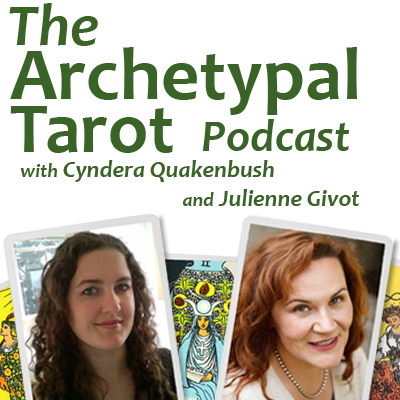
by Julienne Givot | Apr 29, 2012 | Major Arcana Heros Journey, Podcasts, Pop Culture Archetypes |
Listen Now! or Subscribe in iTunes
The Ninth edition of the Archetypal Tarot Podcast attempts to do justice to the Justice card, which

is number 8 of the Major Arcana.
After setting out on a newly realized journey on the Chariot, our hero quickly faces some form of judgement. Justice, pictured as a stern-looking woman is reminiscent of the Goddess of Wisdom, Athena, who assists our hero to view his challenges with a rational, dispassionate perspective. Holding both sword and scales, Justice cuts through to truth and weighs the balance of our ways. Listen in as Julienne recounts the myth of Solomon and also explores the shadow side of Justice. The archetype of the Avenger is briefly explored as Cyndera poses a question to our podcast audience: Do the ends justify the means if the oppressed triumph over their oppressors by using methods that mirror their oppressors’ ways?
We are asked to leave the subjectivity of the Hero for the wisdom and objectivity of the Judge and Mediator archetypes.
Listen in on a conversation with Tarot consultant Cyndera Quakenbush and
Archetypal Consultant, Julienne Givot, as they discuss the symbolic and real world qualities of these archetypal characters.
Recommended reading:
Jung and Tarot: And Archetypal Journey by Sallie Nichols
Examples of the Judge in Film/TV/Drama:
Empowered/Light Aspect
- Gene Hackman in Mississippi Burning ( 1988)
- Gregory Peck in To Kill A Mockingbird (1962)
- Anthony Hopkins in Amistad (1997)
- Meryl Streep in Iron Lady (2011)
- Hugo Weaving in The Lord of the Rings (2001)
- The character of Oberon in Midsummer Nights Dream
Un-empowered/Shadow aspect:
- Raymond Massey in East of Eden (1955)
- Lena Headey as Cersiei in Game of Thrones (HBO 2011/12)
- Tsai Chin in Joy Luck Club – both shadow and light (1993)
Like what you heard on the podcast? Share us on Facebook (handy button below) or give us a review on iTunes.

by Julienne Givot | Mar 23, 2012 | Major Arcana Heros Journey, Podcasts, Pop Culture Archetypes |
Listen Now! or Subscribe in iTunes
The Chariot: Hero, Warrior, and the Crossing of the First Threshold

The Eighth edition of the Archetypal Tarot Podcast explores the movement and meaning encompassed by the Chariot, card number 7 of the
Major Arcana. For the first time, we see our hero of the deck breaking beyond the boundary of the Emperor’s domain. In the last stage, the Lovers, he was faced with a choice and is now thrust down a particular path, reminiscent of the “crossing of the first threshold” of
Joseph Campbell‘s stages of the
hero’s journey. Will all the wisdom of the figureheads from the previous stages help our hero in the real world? Julienne Givot connects in the ancient story of Arjuna as he faces the fears of battle under the guidance of Krishna. Cyndera Quackenbush illustrates the shadowy consequences of the heroic impulse by recounting the myth of Phaeton. The Chariot card allows us to find our own courage in the face of bold undertakings while keeping an eye on the dangers of hubris.
Listen in on a conversation with Cyndera Quakenbush and Julienne Givot, as they discuss the symbolic and real world qualities of these archetypal characters.
Recommended reading:
Way of the Peaceful Warrior by Dan Millman
The Seven Spiritual Laws of Superheroes: Harnessing Our Power to Change the World by Deepak and Gotham Chopra
King, Warrior, Magician, Lover: Rediscovering the Archetypes of the Mature Masculine by Robert Moore and Douglas Gillette
Examples of the Hero in Film/TV:
Empowered/Light Aspect
- Keanu Reeves as Neo in The Matrix (1999)
- Mark Hamill as Luke Skywalker in Star Wars (1977)
- Emma Thompson as Vivian Bearing in Wit (2001, TV)
- Judy Garland as Dorothy in The Wizard of Oz (1939)
- Ed Asner as Carl Fredrickson in UP (2009)
Shadow aspect:
- Jeremy Renner in The Hurt Locker (Hero/Warrior both shadow and light) (2010)
- James Franco as The 2nd Green Goblin in Spiderman 3 (2007)
Examples of the Warrior in Film/TV:
Empowered/Light Aspect
- Harrison Ford in Star Wars (1977)
- Jake Gylenhall as Anthony Swofford in Jarhead (2005)
- Sarah Michelle Geller in Buffy the Vampire Slayer (1997, TV)
- Shirley MacLaine in Terms of Endearment (battling cancer) (1983)
- Zoe Saldana as Nyteri in Avatar (2009)
- Katee Sackoff as Starbuck in Battlestar Gallactica (both shadow and light aspects, 2004, TV)
Shadow Aspect:
- Vin Diesel in the The Chronicles of Riddick (2004)
- Stephan Lang as Colonel Quaritch in Avatar (2009)
Like what you heard on the podcast? Share us on Facebook (handy button below) or give us a review on iTunes.
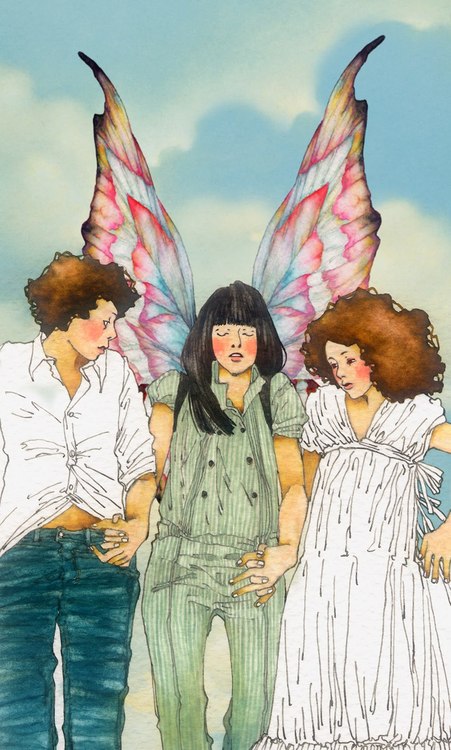
by Julienne Givot | Feb 15, 2012 | Major Arcana Heros Journey, Podcasts, Pop Culture Archetypes |
Listen Now! or Subscribe in iTunes
 The Seventh edition of the Archetypal Tarot podcast reveals our heroic Fool at his/her first genuine choice point represented by card number six, The Lovers. The Lovers brings into focus this important first choice and reminds us that love, balance and companionship are called for. This stage has us examine the archetypes of the Lover as well as the Companion. A reminder to access both our masculine ‘doing-ness’ and feminine receptivity.
The Seventh edition of the Archetypal Tarot podcast reveals our heroic Fool at his/her first genuine choice point represented by card number six, The Lovers. The Lovers brings into focus this important first choice and reminds us that love, balance and companionship are called for. This stage has us examine the archetypes of the Lover as well as the Companion. A reminder to access both our masculine ‘doing-ness’ and feminine receptivity.
Listen in on a conversation with
Tarot Dream Stone consultant Cyndera Quakenbush and
Archetypal Consultant, Julienne Givot, as they discuss the symbolic and real world qualities of these archetypal characters.
Further exploration of the archetype of the Lover: Seizing The Power of The Lover Archetype
Recommended reading:
We: Understanding the Psychology of Romantic Love by Robert A. Johnson
The Eden Project: In Search of he Magical Other by James Hollis
Cyndera recommends: The Lovers Path Tarot set by Kris Waldherr
Archetypes of The Lovers card:
Companion
Lover

The Lovers from the Dreaming Way Tarot
Examples of the Companion in Film/TV:
- Susan Sarandon and Geena Davis in Thelma and Louise (1991)
- Ben Affleck in Good Will Hunting (1997)
- Russell and Dug in the Pixar film UP ( 2009)
Examples of Both Light and Shadow:
- TV Show “Entourage”
- The Hangover
- Bridesmaids (2011)
Shadow or disempowered aspect:
- Eve Arden & Mare Winningham Mildred Pierce (1945 and 2011)
- Winona Ryder in Heathers (1988)
- The Social Network (2011)
Examples of the Lover in Film/TV:
- Dead Poet’s Society especially Neil Patrick Harris and Josh Charles (1989)
- Ewan McGregor in Moulin Rouge (2001)
- Charlie Cox in Stardust (2007)
- Humphrey Bogart and Lauren Bacall in Casablanca (1942)
- Salma Hayek in Frida (2002)
- Cary Elwes in Princess Bride (1987)
- Nicholas Cage in Moonstruck (1987)
Shadow or disempowered aspect:
- Glenn Close in Fatal Attraction (1987)
- Tom Cruise in Vanilla Sky (2001)
- Lupe Ontiveros as Yolanda Saldivar in the film Selena (1997)
- Sandra Bullock in All About Steve (2009)
Like what you heard on the podcast? Share us on Facebook (handy button below) or give us a review on iTunes.
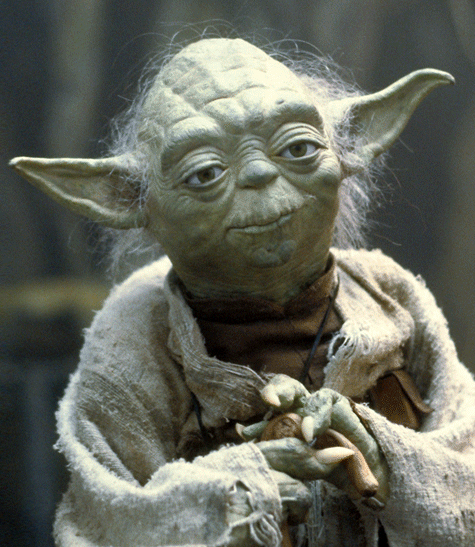
by Julienne Givot | Jan 12, 2012 | Major Arcana Heros Journey, Podcasts, Pop Culture Archetypes |
Listen Now! or Subscribe in iTunes
 The Sixth edition of the Archetypal Tarot Podcast explores the meaning of the Hierophant card of the Tarot as a stage of a journey where one examines the traditions, organizations and structures of one’s life as well as how and who to seek higher guidance from. The Hierophant, also called the Pope card in traditional Tarot decks also symbolizes the archetypes of the Priest, Guide, Guru, Shaman,Wise Man and Messiah. Truly a symbol of higher wisdom, this card is a symbol of seeking greater or spiritual knowledge.
The Sixth edition of the Archetypal Tarot Podcast explores the meaning of the Hierophant card of the Tarot as a stage of a journey where one examines the traditions, organizations and structures of one’s life as well as how and who to seek higher guidance from. The Hierophant, also called the Pope card in traditional Tarot decks also symbolizes the archetypes of the Priest, Guide, Guru, Shaman,Wise Man and Messiah. Truly a symbol of higher wisdom, this card is a symbol of seeking greater or spiritual knowledge.
Listen in on a conversation with
Tarot Dream Stone consultant Cyndera Quakenbush and
Archetypal Consultant, Julienne Givot, as they discuss the symbolic and real world qualities of these archetypal characters.
Archetypes of the Hierophant:
God
Wise Man
Priest
Shaman
Guru
Guide
Messiah
Examples of the Heirophant Archetype’s light aspects in Film:
- Yoda in the Star Wars series
- Laurence Fishburne “The Matrix” trilogy (Priest/Wiseman)
- Ben Kingsley in “Gandhi” (1982)
- Pat Morita in “The Karate Kid” (1984)
Examples of the Heirophant Archetype’s shadow aspects in Film:
- Paul Dano in “There Will Be Blood” (2007)
- Tom Cruise in “Magnolia” (1999)
- Robert Mitchum in “The Night of the Hunter” (1955)
Like what you heard on the podcast? Share us on Facebook (handy button below) or give us a review on iTunes.















 Julienne and Cyndera are back to the closet (aka Archetypal Tarot’s secret headquarters) for an in-depth discussion on superstition and all-around “woo-woo,” which the urban dictionary defines as “unfounded or ludicrous beliefs.” After using these terms in a few podcasts, they received an email from a listener asking just why they are so down on anything ‘woo-woo’ or superstitious. Always happy to hear from listeners and taking this question to heart (and mind), J and C clarify what they mean by superstitious and philosophize on the subject of the tarot, astrology and other systems as both sacred and important learning tools for discernment.
Julienne and Cyndera are back to the closet (aka Archetypal Tarot’s secret headquarters) for an in-depth discussion on superstition and all-around “woo-woo,” which the urban dictionary defines as “unfounded or ludicrous beliefs.” After using these terms in a few podcasts, they received an email from a listener asking just why they are so down on anything ‘woo-woo’ or superstitious. Always happy to hear from listeners and taking this question to heart (and mind), J and C clarify what they mean by superstitious and philosophize on the subject of the tarot, astrology and other systems as both sacred and important learning tools for discernment.




 Listen in on a conversation with
Listen in on a conversation with 

















 Angel & Fairy Godmother/Godfather Archetypes in Films & Television:
Angel & Fairy Godmother/Godfather Archetypes in Films & Television:

 Who knew that Death could be so funny? But here it is, card number 13 in the Major Arcana. Join Julienne and Cyndera as they look at the archetype of Death from a symbolic and psychological point of view with a dash of added humor. Learn why this inevitable stage for the Hero isn’t the end but an important element to the rest of the journey.
Who knew that Death could be so funny? But here it is, card number 13 in the Major Arcana. Join Julienne and Cyndera as they look at the archetype of Death from a symbolic and psychological point of view with a dash of added humor. Learn why this inevitable stage for the Hero isn’t the end but an important element to the rest of the journey.








 Although dating can bring uncomfortable things up, an honest and compassionate relationship with the Victim means we can be stronger, more loving people for the difficult lessons and heartbreak we’ve been through. My experience with cultivating the lessons of the Victim in relation to dating has helped me immensely. I never thought the process could actually be empowering and compassionate, but it can be and that is what I hope to share with you. Please comment, share, Tweet and link this article if others that you think might benefit. I love when you do that.
Although dating can bring uncomfortable things up, an honest and compassionate relationship with the Victim means we can be stronger, more loving people for the difficult lessons and heartbreak we’ve been through. My experience with cultivating the lessons of the Victim in relation to dating has helped me immensely. I never thought the process could actually be empowering and compassionate, but it can be and that is what I hope to share with you. Please comment, share, Tweet and link this article if others that you think might benefit. I love when you do that.
 Examples of the Gambler/Wheel of Fortune Archetype in film:
Examples of the Gambler/Wheel of Fortune Archetype in film:  is number 8 of the Major Arcana.
is number 8 of the Major Arcana.
 The Eighth edition of the Archetypal Tarot Podcast explores the movement and meaning encompassed by the Chariot, card number 7 of the
The Eighth edition of the Archetypal Tarot Podcast explores the movement and meaning encompassed by the Chariot, card number 7 of the 
 The Seventh edition of the Archetypal Tarot podcast reveals our heroic Fool at his/her first genuine choice point represented by card number six, The Lovers. The Lovers brings into focus this important first choice and reminds us that love, balance and companionship are called for. This stage has us examine the archetypes of the Lover as well as the Companion. A reminder to access both our masculine ‘doing-ness’ and feminine receptivity.
The Seventh edition of the Archetypal Tarot podcast reveals our heroic Fool at his/her first genuine choice point represented by card number six, The Lovers. The Lovers brings into focus this important first choice and reminds us that love, balance and companionship are called for. This stage has us examine the archetypes of the Lover as well as the Companion. A reminder to access both our masculine ‘doing-ness’ and feminine receptivity.

 The Sixth edition of the Archetypal Tarot Podcast explores the meaning of the Hierophant card of the Tarot as a stage of a journey where one examines the traditions, organizations and structures of one’s life as well as how and who to seek higher guidance from. The Hierophant, also called the Pope card in traditional Tarot decks also symbolizes the archetypes of the Priest, Guide, Guru, Shaman,Wise Man and Messiah. Truly a symbol of higher wisdom, this card is a symbol of seeking greater or spiritual knowledge.
The Sixth edition of the Archetypal Tarot Podcast explores the meaning of the Hierophant card of the Tarot as a stage of a journey where one examines the traditions, organizations and structures of one’s life as well as how and who to seek higher guidance from. The Hierophant, also called the Pope card in traditional Tarot decks also symbolizes the archetypes of the Priest, Guide, Guru, Shaman,Wise Man and Messiah. Truly a symbol of higher wisdom, this card is a symbol of seeking greater or spiritual knowledge.